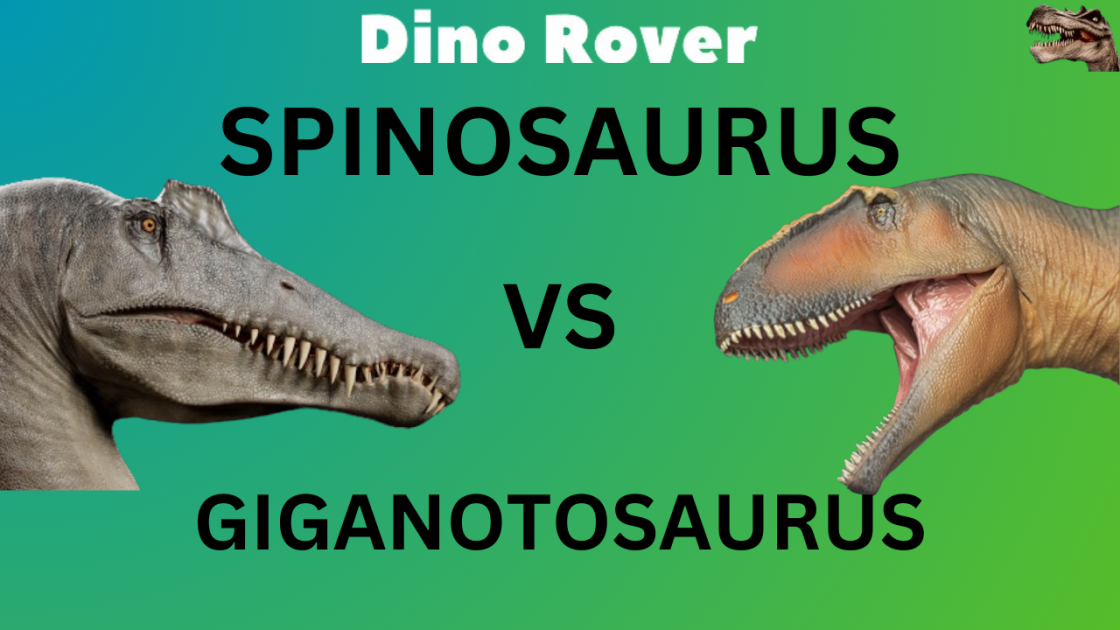
Spinosaurus, renowned as the colossal and formidable titan of the Megatherapods, stands as an iconic figure in the annals of prehistoric creatures. Belonging to the Spinosauridae family, it held sway over the vast landscapes and waters of Egypt, where its supremacy was contested only by formidable contemporaries such as Carcharodontosaurus, Bahariasaurus, Rugops, and Deltadromieus.
Giganotosaurus was a colossal carnivorous Megatherapod that ruled the expansive South American terrains. If T. rex symbolized the Mike Tyson and Spinosaurus the Khali, then Giganotosaurus emerges as the Usain Bolt of the Megatherapods, ready to assert its dominance in the prehistoric ring.
The saga of skulls unfolds, where the regal Spinosaurus boasts a longer skull, while the Giganotosaurus showcases a broader cranial structure. Each equipped with distinctive weaponry, Giganotosaurus sports sharp, serrated teeth designed for cutting and slashing, contrasting with Spinosaurus’s teeth, which, while not as sharp, served adeptly in gripping fish and other prey, but dealt severe damage.
Size, a pivotal factor in the prehistoric power dynamics, tilts slightly in favor of Spinosaurus, standing at an imposing 20 feet in height and stretching 50 feet in length. Giganotosaurus, though formidable, presents slightly more modest dimensions, measuring 18 feet in height and 42 feet in length. However, the weight division turns in favor of Giganotosaurus, as it holds a clear advantage with a weight range of 6 to 10 tons, surpassing the 7 to 9 tons of Spinosaurus.
The contest of strength unfolds across various dimensions — arm strength, lifting strength, tail strength, and neck strength favoring Spinosaurus, while jaw strength, strike strength, leg strength, overall body strength, and bite force are attributes in which Giganotosaurus asserts its dominance.Speed, a critical element in the prehistoric survival dance, reveals Giganotosaurus as the more agile contender on land, contrasting with Spinosaurus’s prowess in the aquatic realm.
In the unforgiving landscapes where survival demanded constant combat, Spinosaurus faced formidable adversaries like Carcharodontosaurus and colossal Crocodylomorphs such as Sarcosuchus in a bid to secure its place in the pecking order. Conversely, Giganotosaurus, reigning as the solitary carnivorous giant in its habitat, faced fewer adversaries. Its habitat lacked dangerous preys that necessitated fierce battles for survival, providing the Giganotosaurus with an environment conducive to its dominance.
In the culmination of this prehistoric clash, the verdict emerges — in a one-on-one terrestrial duel, Giganotosaurus is predicted to triumph over Spinosaurus with high difficulty, leveraging its superior attributes. In the aquatic realm, however, the scales tip decisively in favor of Spinosaurus with high ease. Thus, the epic saga of the Megatherapods unveils a complex interplay of size, strength, and adaptability, each carving its niche in the unforgiving tapestry of prehistoric existence.

Leave a Reply